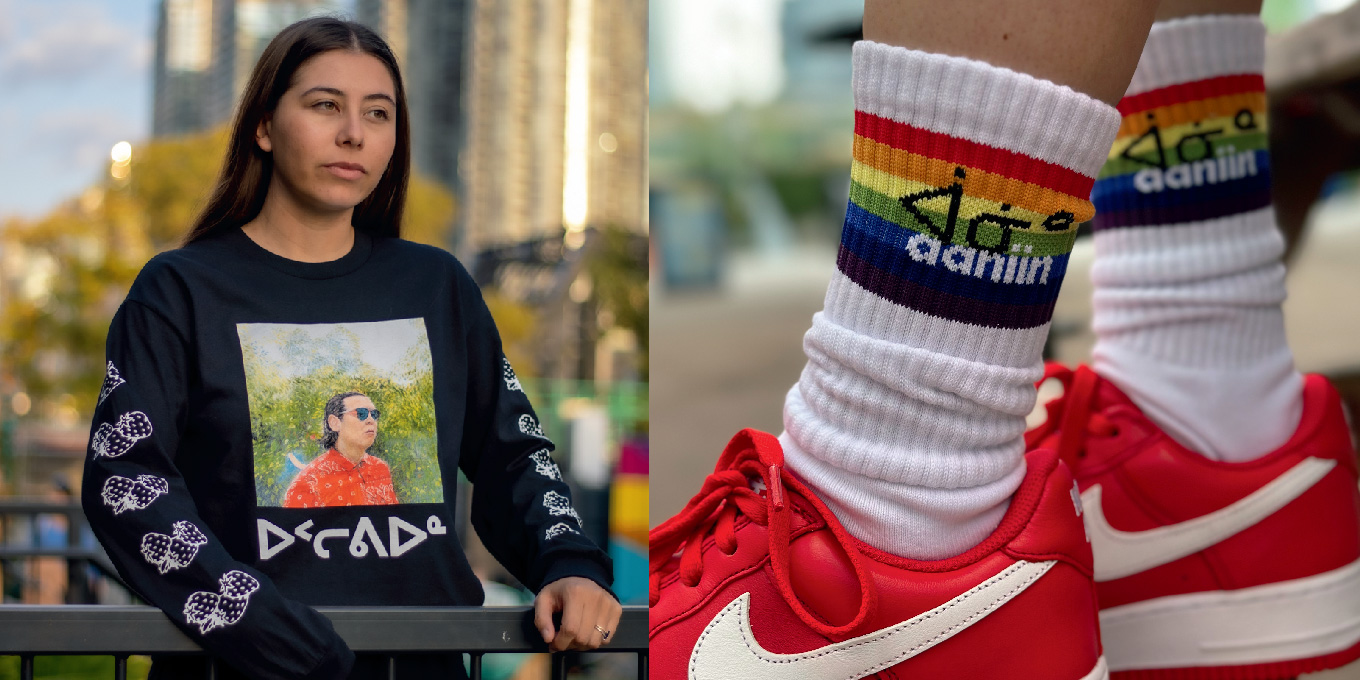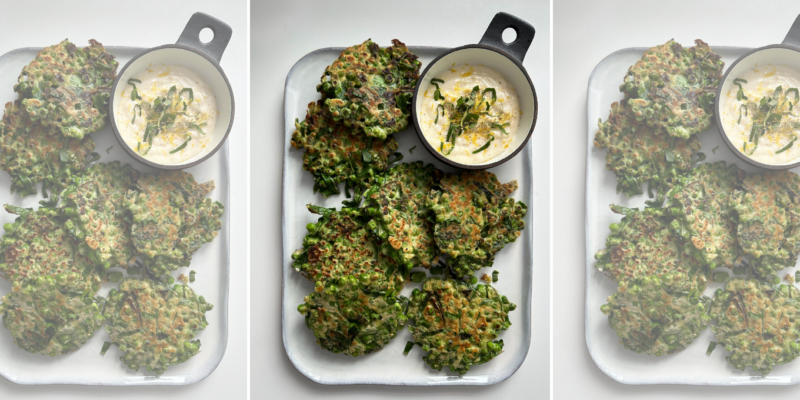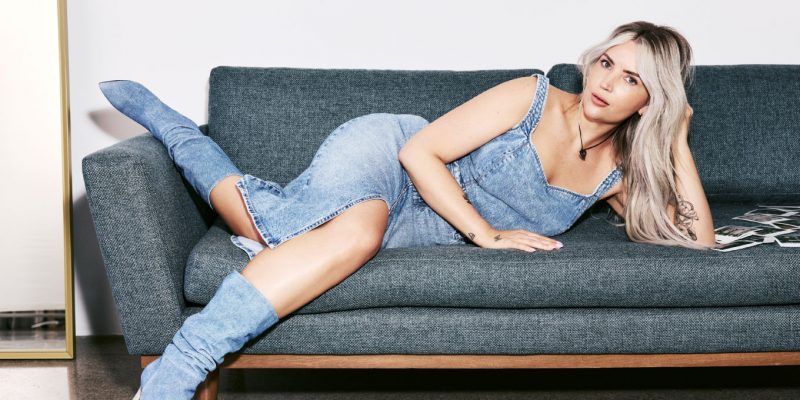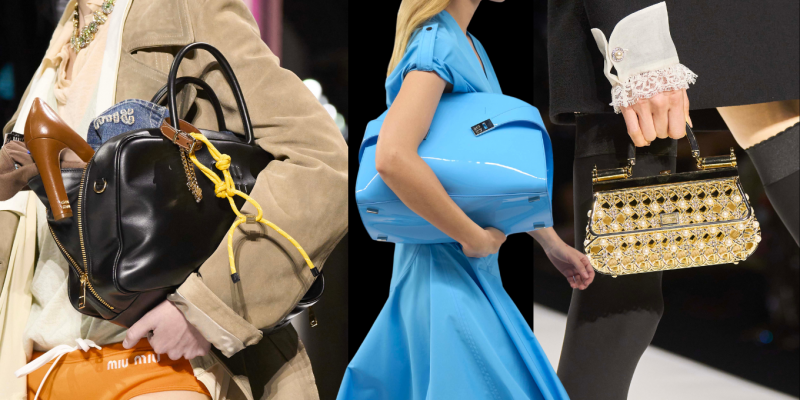Fashion
Chelsee Pettit Wants to Open Canada’s First All-Indigenous Department Store
From Mini Tipi's recycled-fabric blankets to Lesley Hampton's size-inclusive apparel, aaniin is a stage for 35 Indigenous brands—and counting.
by : Aman Dosanj- Oct 6th, 2023

Ethan Verroen
When Chelsee Pettit was wandering the streets of downtown Tkaronto (the traditional Mohawk word for Toronto) a few years ago, she was excited to see somebody wearing clothes adorned with syllabics—an aboriginal writing system with dialect-specific characters. As she moved closer, she realized that the pattern was just a triangle. “I felt super disappointed, so I immediately jumped into action and started creating a streetwear brand that uses syllabics as the main design focus,” recalls the Anishinaabe member of Aamjiwnaang First Nation. Since launching aaniin (which is the Ojibwe word for “hello”)—her bold conversation-starting line of hoodies, tees, accessories and socks—in June 2021, the entrepreneur has been firmly focused on fostering the Indigenous economy and promoting year-round Indigenous visibility with a fresh new storefront in Toronto. “Nothing [like this] exists right now,” says Pettit of her shopping start-up project, which she hopes will roll out across malls in the near future. “I’m just trying to show that it is possible. I [see] this as the concept stage of a department-store space in Canada that is Indigenous-designed, -owned and -made.”
Born and raised in Sarnia, Ont., Pettit enrolled at the prestigious Richard Robinson Fashion Design Academy in Ottawa at age 18. “Every week, [I spent] about $300 on material for [school] projects,” she says. Feeling the mounting financial pressures, even though she had a full-time job, the aspiring designer dropped out of the program after three months. “I gave up on that journey because even if I did make it, where could I sell my products? I didn’t have a place in the fashion community. I felt like I had to be like everybody else.”
That experience sparked her recent shift from part-time online and market-based streetwear brand to full-fledged all-Indigenous collaborative retail store at Stackt Market, an ever-evolving shopping destination made entirely of shipping containers in the heart of downtown Toronto. Her 85-square- metre year-round shipping container is now a stage for 35 other Indigenous brands, including Lesley Hampton, which offers size-inclusive apparel by the eponymous Toronto-based designer; Mini Tipi, known for its gorgeous recycled-fabric blankets (which are woven in Quebec and incorporate culturally significant patterns via collaborations with artists from across Turtle Island); B.C.-based Section 35, whose globally acclaimed, story-fuelled streetwear collection aims to bring better representation to Indigenous imagery; and Ottawa’s Kokum Scrunchies, whose vibrant floral-print scrunchies are lovingly handmade by 12-year-old founder Mya Beaudry. “If we’re together in a space, we’re a lot stronger than me by myself,” says the purpose-led entrepreneur.
Despite Pettit’s recent barrier-breaking achievements, it’s clear that the sparkly-eyed 29-year-old is just getting started. “I thought it would take three to four years [to get aaniin off the ground], and I did it in just two,” she says, beaming. “I feel very confident that it’s on its way.”
aaniin at Toronto's Stackt Market
 Robbie Harper
Robbie HarperON INDIGENOUS REPRESENTATION IN FASHION
“Throughout my life, I’ve seen the negative impacts of not being represented in mainstream [retail] outlets. Having more stories like [ours] or just seeing our products being celebrated, as opposed to mocked, really makes a big impact, especially on Indigenous youth.”
ON PROVING HERSELF
“When I started, I was trying to get people to believe in the mission and that we could become a retailer in Canada. It took a lot of risk. As a business owner—and first-time founder—I still have to prove myself. So I’m not gonna get [vendors] to give me a ton of money, but I don’t want them to feel like there isn’t potential. We offer sliding scales and monthly memberships, and we only take 15 percent of the sales transactions to cover our basic overheads.”
ON FOSTERING THE INDIGENOUS ECONOMY
“I have one designer going through a lot in their life right now, and they could only get me a certain number of [beaded] earrings this time. I work with artists where they’re at, and I never try to push people. Beadwork is meant to be done with good intentions—I don’t want them to lose that feeling.”
ON THE SPIRIT OF COLLABORATION
“I want a [well]-curated balance between the vendors. We’re strong in our own unique ways. It ’s better to amplify the work we are already doing than to step on toes and take over each other’s markets—especially since, because we are so small, we can’t overwhelm our customer base. If we jump into having 1,000 SKUs [stock-keeping units], we won’t have good results. I don’t want to be a gate-keeper, but I want all vendors to make substantial sales so it’s worth it for them.”
ON THE FUTURE
“I’m planning five years ahead. My goal is to get into malls. Being 100 percent Indigenous-owned throughout the business’ lifespan is the most important [thing]. We see non-Indigenous businesses donating their proceeds, but that still doesn’t give ownership to Indigenous peoples. I encourage non-Indigenous companies to look at what Indigenous companies are doing and instead of [replicating that], amplify our voices because, in my opinion, we can do it much better. We’re buckling down [at Stackt Market] for the next year and a half and seeing what the future brings.”
Newsletter
Join our mailing list for the latest and biggest in fashion trends, beauty, culture and celebrity.
Read Next

Culture
These Pea, Mint and Spinach Fritters Are the Ultimate Spring Snack
Served with a little creamy yogourt sauce on the side, these fritters are an ideal meal, appetizer or shareable snack.
by : Margaux Verdier- May 7th, 2024

Here’s What to Pack For Your Next Vacation—So You Don't Have to Stress About It
10 things you need to travel well-prepared, and in style.
by : Lauren Knowles- May 7th, 2024

Beauty
Summer Prep: How to Feel Confident in Your Swimsuit
New Size-Inclusive Swimwear: Gillette Venus partners with The Saltwater Collective to Launch a Collection for Any Body
by : ELLE Canada- Apr 24th, 2024




